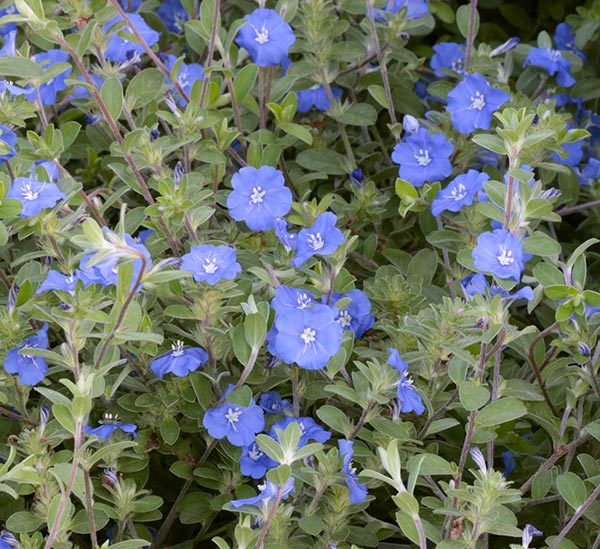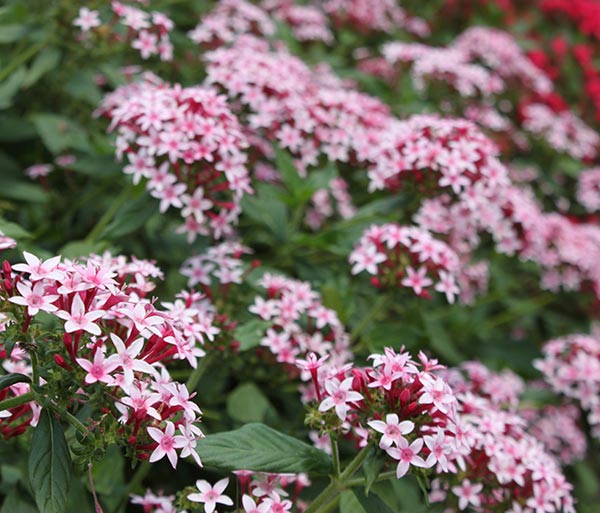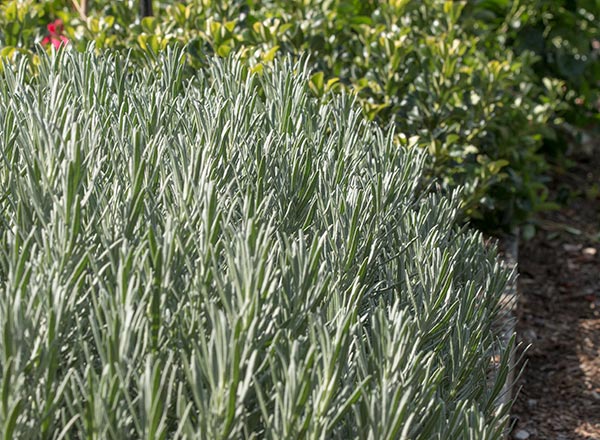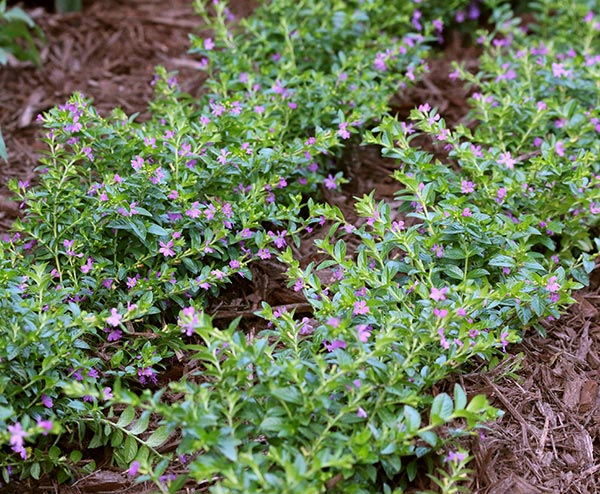Table of Contents
Costa Farm FL plants
Evolvulus
Also called Blue Daze, evolvulus is a charming groundcover that offers true-blue flowers, a rarity in the gardening world. Those sky-blue flowers look great against its silvery-green foliage. It blooms nonstop, making it valuable for edging garden beds and borders or spilling over the side of a container garden. One quality that makes evolvulus such a good choice for Florida gardens is that it’s delightfully drought tolerant. Once established it rarely needs watering outside of natural rainfall. If evolvulus has a downside, it’s that its blooms are glorious in the morning, but usually close up by noon – so be sure to plant it where you’ll enjoy it during the morning hours. Evolvulus typically grows about 6 inches tall and 12 to 18 inches wide.
Grow evolvulus in full sun or part shade and well-drained soil. Fertilizing it helps encourage best bloom display. It’s reliably perennial in Central and South Florida; in North Florida, it behaves more like an annual, especially in colder-than-average winters.
Pentas
You can’t go wrong planting low-maintenance pentas in your yard. One of the easiest flowers to grow in Florida, pentas blooms nonstop, producing showy clusters of red, pink, lavender, or white flowers. The blooms are beautiful and also irresistible to butterflies and hummingbirds. I frequently see zebra longwing butterflies (Florida’s official state butterfly) visiting the pentas in my yard. There is a host of varieties available that grow different sizes, from dwarf (that reach 12 to 14 inches tall) to full size (that can top out at 36 to 48 inches tall). A new collection, called Falling Star, stay low and are useful in groundcovers and hanging baskets.
Grow pentas in full sun or part shade and well-drained soil. Once established, it’s moderately drought tolerant. Regularly fertilizing in spring and summer will help encourage best blooms in sandy soils. Or you can use a slow-release fertilizer a couple of times per year. It thrives in both container gardens and landscapes. Pentas is a perennial that grows well in North, Central, and South Florida.
Lavender
Lavender (Lavandula) offers beauty and fragrance! This drought-tolerant garden plant charms gardeners as well as bees and butterflies with its lovely spikes of violet-purple, pink, or white flowers and silvery-green foliage. The oils that give the leaves and flowers their scent make lavender an excellent choice for potpourris and sachets, and because the flowers dry well, it is also fun for dried-floral crafts. Be sure to plant lavender along walkways where you can easily brush up against the plant to release the fragrance.
Grow lavender in full sun and well-drained soil. It thrives in sandy soil and actually resents ground that stays wet for extended periods. If you have an irrigation system, it’s helpful to keep lavender away from sprinklers that will regularly wet its foliage. The plant thrives in garden beds and borders, as well as container gardens. It’s a perennial in North, Central, and South Florida, through it usually blooms better in northern parts of the state.
Mexican Heather
Mexican heather (Cuphea) is a Florida garden staple that offers shiny, dark green foliage accented with charming lavender-pink or white flowers almost all year long. Though the plants look small, they form a dense and easy-care groundcover once they get established. And while you’ll love that they’re beautiful and low maintenance, bees and butterflies will love visiting the dainty flowers for their sweet nectar. Mexican heather is useful as a groundcover, in mass plantings, or as an edging plant in garden beds and borders where it thrives in the heat with practically no care at all. It grows 12 to 18 inches tall and 24 to 30 inches wide in time.
Grow Mexican heather in full sun or part shade and well-drained soil. Once established, it’s quite drought tolerant so you can just about plant it and forget it. In addition to thriving in landscapes, it’s also good for container gardens. It’s a perennial in North, Central, and South Florida.




